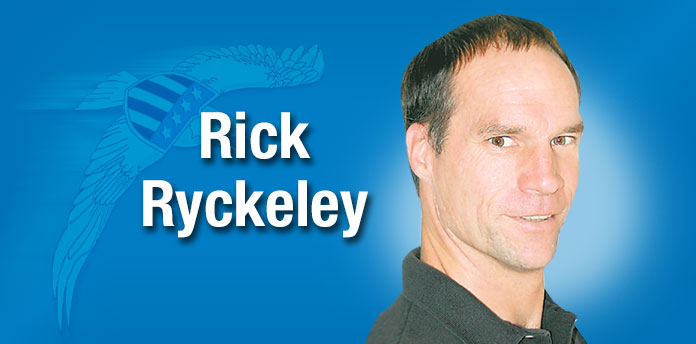There’s no easy way to say it. Math is forever broken, and I don’t think there’s any way of fixing it.
Hitting the math wall today hurt much more than any gut punch I ever received by Down the Street Bully Brad. After landing a few hits, Bully Brad finally got tired and bored of using me as his human punching bag then moved on to find his next victim. Not so with the math of today.
Math never gets bored.
Take it from me: math will pound your head endlessly as you try to understand it. And unlike Bully Brad, math never gets tired of pounding you. Even as you finally throw up your hands in frustration shouting, “I quit!” Math doesn’t.
It’s not me — it’s you.
Or I should say, it’s not me that’s the problem; it’s math. I haven’t changed; it has.
Math today, as far as I can see, is not my friend anymore. Yes, math and I used to be buddies, but no longer. Why has math and yours truly had a big falling out? Well, to find this solution for “Y,” you’ll just have to read on, Dear Reader.
There was a time, a long, long time ago on that old familiar street not so far away called Flamingo, math made sense to me, and I was rather good at it. For example, if I punched Twin Brother Mark twice, then he had the right to punch me back twice. Two punches for me, two for him, four punches in all. Both sides of our punching equation were always equal.
See, math made sense when we were growing up.
Our teachers taught regular old math at Mt. Olive Elementary School. By the time I reached Briarwood High School, home of the Mighty Buccaneers, I had the ability to “see” the numbers in my head. I found it easier to first solve complicated math problems in my head and then write only the answer down on paper. I thought showing my work was a waste of time. Mr. Baker, my 10th grade Math teacher thought otherwise.
The arrival of “New Math.”
In eleventh grade, everything I learned about math changed with the introduction of something called “New Math.” They said it was a better, more efficient way to solve problems. I think “They” were math teachers and not students. The math I’d learned over the years was now considered “Old Math.” At this point everything in the math world was flipped upside down. Other than making it much more complicated, they did something else.
They broke math forever.
With New Math, everything changed with the introduction of letters into math problems. This I didn’t understand. Letters belonged in English class not math class. I was good at math … not so good at English. Now we had to solve for “X.”
Back at our house, Old Math was working just fine. Two punches and two punches equaled four punches, and our punch equation was still equal. And trust me, there was no need to solve for X or Y. The equation was already solved. Twin Brother Mark knew “Y” I was punching him. He had punched me first.
I attribute my lower test grades in eleventh grade math class to the introduction of letters into equations. Unfortunately, the next year things got a whole lot worse.
Word problems were short stories we had to read and then pull out numbers to somehow solve it. It’s been almost fifty years, but I still remember my first word problem.
“If a train started in Florida with 10 passengers traveling at 50 MPH and a train started in Texas with 15 passengers traveling at 60 MPH, which train and how many people would arrive in Washington, D.C., first?”
My answer: Whoever decided to just take a plane would get to D.C. first. “Y” would anyone take a train when they could fly?” The teacher didn’t appreciate my answer.
But New Math wasn’t finished.
As if X’s and Y’s and word problems weren’t confusing enough, by my senior year there were sine, cosine, functions, cofunctions, just to name a few. My beloved numbers were now totally replaced by letters. For example: cos = a/h. But, before I could graduate, New Math had one last curveball to throw my way.
Symbols.
New Math wasn’t happy enough tormenting me by just adding letters, now it added symbols. Math turned into stuff like this: That last one is called a binomial theorem. Yes, I can spell it, but I still don’t have a clue as to what it does and for good reason: there are no numbers. Someone took them all out and replaced them with letters and a funny looking E and in doing so broke math forever.
That last one is called a binomial theorem. Yes, I can spell it, but I still don’t have a clue as to what it does and for good reason: there are no numbers. Someone took them all out and replaced them with letters and a funny looking E and in doing so broke math forever.
The triumphant return of Old Math.
Our two granddaughters are starting to learn all about New Math from their teachers at school. Yesterday Little One, our fifth grader, asked me for help with her homework. After a quick look, I said, “If you want the right answer, best to wait until Gigi gets home. She’s much better at New Math than Big Papa is.”
Then I added, “But next time your sister bothers you, I have a solution I know will work. It’s called Old Math, and it’s a math that my three brothers, The Sister, and I learned while growing up a long, long time ago on that old familiar street not so far away called Flamingo.”
[Rick Ryckeley has been writing stories weekly in The Citizen since 2001.]












Leave a Comment
You must be logged in to post a comment.